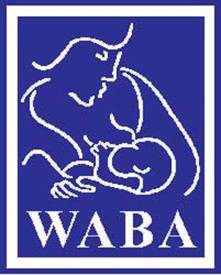The Baby-friendly Hospital Initiative (BFHI)
Donor Human Milk Banking
WHO
(2009) Acceptable Medical Reasons for the Use of breastmilk Substitutes
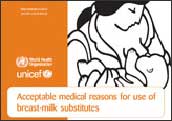 (2009) Acceptable Medical Reasons for the Use of breastmilk Substitutes
(2009) Acceptable Medical Reasons for the Use of breastmilk Substitutes
(2003) Global Strategy for Infants and Young Children, Geneva
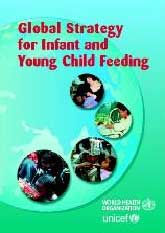 (2003) Global Strategy for Infants and Young Children, Geneva
(2003) Global Strategy for Infants and Young Children, Geneva
United Nations (1989) Convention on the Rights of Child
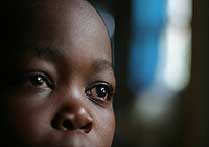 United Nations (1989) Convention on the Rights of Child
United Nations (1989) Convention on the Rights of ChildChildren have rights as human beings and also need special care and protection……..
PEDIATRICS
PEDIATRICS : (2005) Breastfeeding and the use of human milk 115(2):496-506.
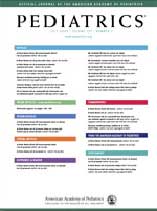 (2005) Breastfeeding and the use of human milk 115(2):496-506.
(2005) Breastfeeding and the use of human milk 115(2):496-506.
Considerable advances have occurred in recent years in the scientific knowledge of the benefits of breastfeeding, the mechanisms underlying these benefits, and in the clinical management of breastfeeding. This policy statement on breastfeeding……
JOURNAL OF HUMAN LACTATION
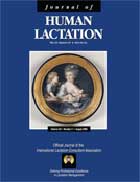 Jones Frances. History of North American Donor Milk Banking: One Hundred Years of Progress.(2003) Journal of Human Lactation 19 (3) p.313-318.
Jones Frances. History of North American Donor Milk Banking: One Hundred Years of Progress.(2003) Journal of Human Lactation 19 (3) p.313-318.
Over the past 100 years, North American milk banking has evolved from an idea to a sophisticated process. The early history of establishment of North American banks, including screening processes undertaken, provides the basis……
BREATFEEDING MEDICINE
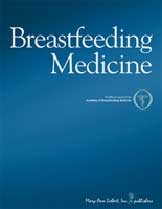 Arnold. U.S. health policy and access to banked donor human milk. Breastfeed Med. 2008 Dec; 3(4):221-9.
Arnold. U.S. health policy and access to banked donor human milk. Breastfeed Med. 2008 Dec; 3(4):221-9.
Barriers to the use of banked donor milk are numerous, and many patients are denied access to it because of lack of policy explicitly addressing its use. This examination of U.S. health policies, both governmental and professional………
CANADIAN MEDICAL ASSOCIATION JOURNAL
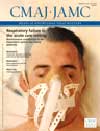 http://www.cmaj.ca/content/183/3/E155.full
http://www.cmaj.ca/content/183/3/E155.full
More than two decades after fears of HIV transmission forced the closure of all but one of Canada’s 23 milk banks, regulators, medical professionals and mothers remain divided on the safety of sharing breastmilk………..
PUBLIC HEALTH REPORTS
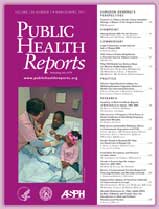 Geraghty SR, Heier JE, Rasmussen KM. Got milk? Sharing human milk via the Internet. Public Health Rep. 2011 Mar-Apr; 126(2):161-4.
Geraghty SR, Heier JE, Rasmussen KM. Got milk? Sharing human milk via the Internet. Public Health Rep. 2011 Mar-Apr; 126(2):161-4.
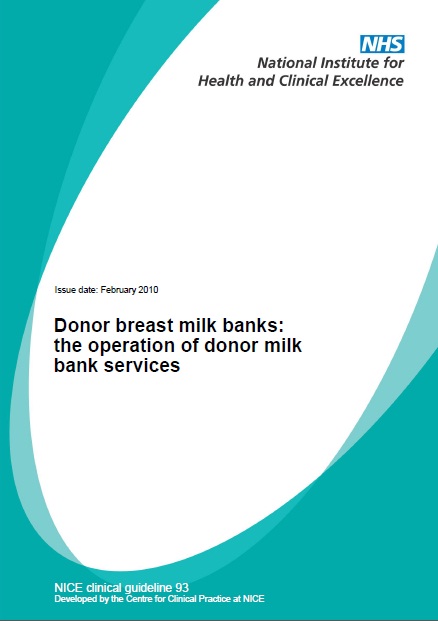 Donor milk banks: the operation of donor milk bank services
Donor milk banks: the operation of donor milk bank servicesHuman Milk Banking Association of North America (HMBANA)
www.hmbana.org
United Kingdom Association for Milk Banking (UKAMB)
www.ukamb.org/
Birthing Practices & Breastfeeding
Impact of Birthing Practices on Breastfeeding: Protecting the Mother and Baby Continuum
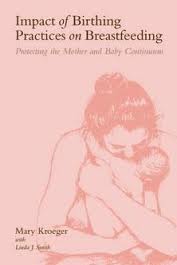 By Mary Kroeger with Linda J. Smith
By Mary Kroeger with Linda J. Smith
Impact of Birthing Practices on Breastfeeding: Protecting the Mother and Baby Continuum is an essential resource for all who work with mothers and newborns. It spans both developed and developing countries, making it an important text for global policy setters for whom the goal of keeping childbirth as natural as possible and ensuring that both mother and newborn are ready to optimally breastfeed, is of paramount importance……….
10 Steps of the CIMS Mother-Friendly Childbirth Initiative
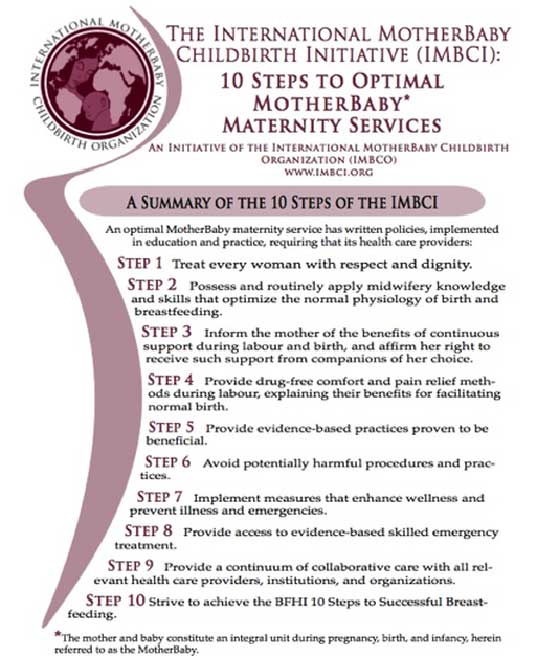 The 10 Steps of the MotherBaby Childbirth Initiative are based on the results of best available evidence about the safety and effectiveness of specific tests, treatments, and other interventions for mothers and babies. “Safe” means that care is provided………………….
The 10 Steps of the MotherBaby Childbirth Initiative are based on the results of best available evidence about the safety and effectiveness of specific tests, treatments, and other interventions for mothers and babies. “Safe” means that care is provided………………….
Complementary Feeding
Breastfeeding Gateway: Breastfeeding beyond 6 months
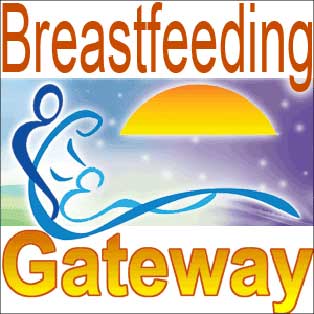 Internationally agreed recommendations for optimal feeding of infants and young children advocate exclusive breastfeeding for the first six months of life, followed by complementary feeding and continued breastfeeding for up to two years or beyond. From 6 months, infants need additional foods alongside continued breastfeeding……………………..
Internationally agreed recommendations for optimal feeding of infants and young children advocate exclusive breastfeeding for the first six months of life, followed by complementary feeding and continued breastfeeding for up to two years or beyond. From 6 months, infants need additional foods alongside continued breastfeeding……………………..
2005 WBW Action Folder
 Breastfeeding and Family Foods: Loving & Healthy – Feeding other foods while breastfeeding is continued
Breastfeeding and Family Foods: Loving & Healthy – Feeding other foods while breastfeeding is continued
WABA Joint Statement on Protecting, Promoting and Supporting Continued Breastfeeding from 6 – 24 + Months: Issues, Politics, Policies and Action
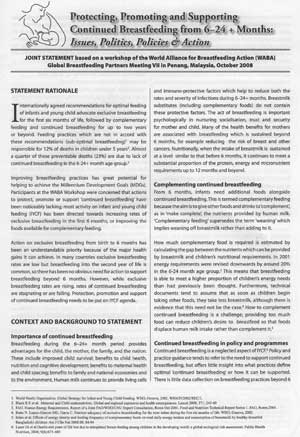 Internationally agreed recommendations for optimal feeding of infants and young child advocate exclusive breastfeeding for the first six months of life, followed by complementary feeding and continued breastfeeding for up to two years or beyond. Feeding practice…………
Internationally agreed recommendations for optimal feeding of infants and young child advocate exclusive breastfeeding for the first six months of life, followed by complementary feeding and continued breastfeeding for up to two years or beyond. Feeding practice…………
WHO
Guiding Principles for Complementary Feeding of the Breastfed Child
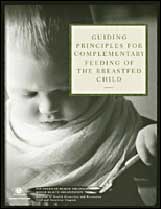 Adequate nutrition during infancy and early childhood is fundamental to the development of each child’s full human potential. It is well recognized that the period from birth to two years of age is a “critical window” for the promotion of optimal growth, health and behavioral development. Longitudinal studies have consistently shown that this is the peak age for growth faltering, deficiencies of certain micronutrients, and common childhood illnesses such as diarrhea. After a child reaches 2 years of age…….
Adequate nutrition during infancy and early childhood is fundamental to the development of each child’s full human potential. It is well recognized that the period from birth to two years of age is a “critical window” for the promotion of optimal growth, health and behavioral development. Longitudinal studies have consistently shown that this is the peak age for growth faltering, deficiencies of certain micronutrients, and common childhood illnesses such as diarrhea. After a child reaches 2 years of age…….
UNICEF
UNICEF and the Global Strategy on Infant and Young Child Feeding (GSIYCF), Understanding the Past, Planning the Future
The WHO/UNICEF Global Strategy on IYCF (GSIYCF), approved in 2002, sets the standards for global action in support of optimal breastfeeding, complementary feeding, and related maternal nutrition and health. In moving forward on this strategy…………..
HIV & Breastfeeding
Breastfeeding Gateway : HIV
 HIV/AIDS is not discriminatory. It could affect anybody, and babies are not spared from this risk. When a child is brought into the world, we wish the best for the child. However, sometimes, reality hits hard. There has been debate on the interventions
HIV/AIDS is not discriminatory. It could affect anybody, and babies are not spared from this risk. When a child is brought into the world, we wish the best for the child. However, sometimes, reality hits hard. There has been debate on the interventions
WHO
Guidelines on HIV and infant feeding 2010. Principles and recommendations for infant feeding in the context of HIV and a summary of evidence.
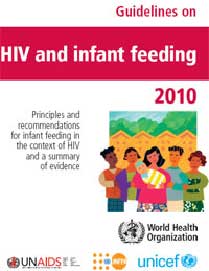 These guidelines were produced by the World Health Organization Department of Child and Adolescent Health and Development and HIV, in collaboration with UNAIDS, UNFPA and UNICEF.
These guidelines were produced by the World Health Organization Department of Child and Adolescent Health and Development and HIV, in collaboration with UNAIDS, UNFPA and UNICEF.
UNICEF
UNICEF’s Support to Free Infant Formula for Infants of HIV-Infected Mothers in Africa 2004
UNICEF began supporting Governments in providing services to HIV-infected mothers to prevent the transmission of HIV from mother to child (PMTCT) in 1998. Initially this support was to 11 countries in order to pilot the feasibility of PMTCT services, but more recently an increasing number of countries have started PMTCT activities or are planning to do so. As of December 2002 UNICEF had provided support to the planning and/or implementation of PMTCT in 54 countries. These projects support pregnant women with HIV testing and counseling, improved health care, anti-retroviral drugs, and counseling on infant feeding options.
Current Status Of Protection, Support And Promotion Of Breastfeeding In Four African Countries The visits were conducted by Michael Latham, Professor of International Nutrition, Cornell University and Mrs. Pauline Kisanga, Regional Coordinator, IBFAN Africa. The following report highlights some interesting and disturbing facts about the current status of breastfeeding in the countries visited.
HIV-Positive – OK to Breast-feed
The scientific community accepted that there is reduced risk of breastfeeding compared to formula feeding for HIV positive mothers in Africa & Asia. Podcast interviewing South African pediatrician Hoosen Covadia, on the acceptance by the scientific community.
Flash-heated breastmilk can be utilized for “replacement feeding”.
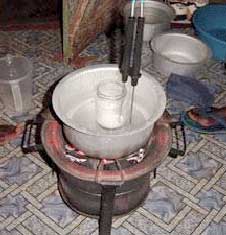 Data suggest that Flash-heat, a simple home pasteurization method, is often an acceptable infant feeding option for HIV positive mothers in developing countries where access to safe infant formula is not a realistic choice.
Data suggest that Flash-heat, a simple home pasteurization method, is often an acceptable infant feeding option for HIV positive mothers in developing countries where access to safe infant formula is not a realistic choice.
Flash-heat Inactivation of HIV-1 in breastmilk
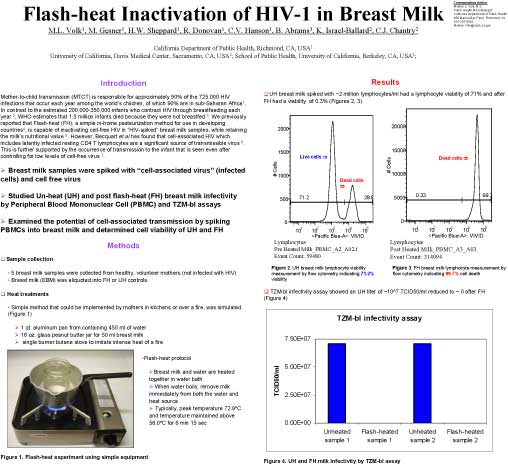 We previously reported that Flash-heat (FH), a simple in-home pasteurization method for use in developing countries4, is capable of inactivating cell-free HIV in “HIV-spiked” breastmilk samples, while retaining the milk’s nutritional value. However, Becquart et.al has found that cell-associated HIV which includes latently infected resting CD4 T lymphocytes are a significant source of transmissible virus. This is further supported by the occurrence of transmission to the infant that is seen even after controlling for low levels of cell-free virus
We previously reported that Flash-heat (FH), a simple in-home pasteurization method for use in developing countries4, is capable of inactivating cell-free HIV in “HIV-spiked” breastmilk samples, while retaining the milk’s nutritional value. However, Becquart et.al has found that cell-associated HIV which includes latently infected resting CD4 T lymphocytes are a significant source of transmissible virus. This is further supported by the occurrence of transmission to the infant that is seen even after controlling for low levels of cell-free virus
Research Task Force Newsletter
This newsletter aims to present some of the emerging research related to breastfeeding and infant and young child feeding in a comprehensive and easy-to-read format. For each issue, we will choose a few current topics where we ask key researchers/programme experts to summarise the latest research and explain how these findings can be applied in the real world. You will also find abstracts and commentaries on a few research studies and the links to the full text articles for further reading. We hope that this newsletter will enhance your work, whether programme, clinical or advocacy, as well as stimulate discussion about research findings, methodologies and ethics. Your comments on the current topics and articles are most welcome! If you have any suggestions for future topics, please let us know. The newsletter will be issued as an e-newsletter three times a year.
Other Resources
The 10th Step and Beyond: Mother Support for Breastfeeding
 This is a highly readable and encouraging introduction to the topic. It is filled with practical advice. You will find solutions to problems large and small, The book shows that mother support is not just about providing mother- to-mother breastfeeding support, it is also about all of us working together to support the breastfeeding mother and make breastfeeding the normal way to feed a baby. This book will give you ideas about tried-and-true methods of support that can be adapted in your community to better support breastfeeding moms and help you plan for pitfalls that can cause your program to fail.
This is a highly readable and encouraging introduction to the topic. It is filled with practical advice. You will find solutions to problems large and small, The book shows that mother support is not just about providing mother- to-mother breastfeeding support, it is also about all of us working together to support the breastfeeding mother and make breastfeeding the normal way to feed a baby. This book will give you ideas about tried-and-true methods of support that can be adapted in your community to better support breastfeeding moms and help you plan for pitfalls that can cause your program to fail.
Authors: Virginia Thorley and Melissa Clark Vickers
view flyer
Understanding Breastfeeding
 This is a highly readable and encouraging introduction to the topic. It is filled with practical advice. You will find solutions to problems large and small, as well as topics ranging from sore nipples to the feeding of a premature baby. The book also provides a fascinating insight into the checkered history of breastfeeding from ancient times to the present. Why was it that in the past healthy well-to-do women so often entrusted their precious infants to the care of professional wet nurses? What led generations of physicians to draw up rules that made it impossible for many mothers to breastfeed? And how and why did science and common sense triumph in the end
This is a highly readable and encouraging introduction to the topic. It is filled with practical advice. You will find solutions to problems large and small, as well as topics ranging from sore nipples to the feeding of a premature baby. The book also provides a fascinating insight into the checkered history of breastfeeding from ancient times to the present. Why was it that in the past healthy well-to-do women so often entrusted their precious infants to the care of professional wet nurses? What led generations of physicians to draw up rules that made it impossible for many mothers to breastfeed? And how and why did science and common sense triumph in the end
Authors: Elisabet Helsing and Anna-Pia Häggkvist
Infant and young child feeding. Model Chapter for textbooks for medical students and allied health professionals.
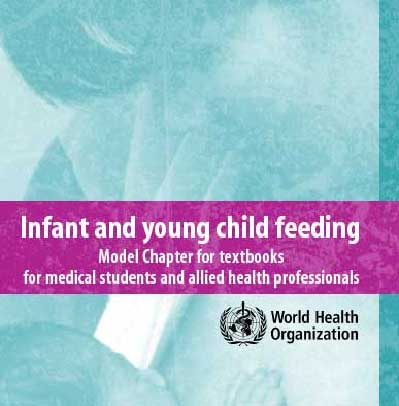 Optimal infant and young child feeding practices rank among the most effective interventions to improve child health. Unfortunately, it is often not well addressed in the basic training of doctors, nurses and other allied health professionals. The Model Chapter on Infant and Young Child Feeding produced by World Health Organisation (WHO), with scientific references which provide evidence and further information about specific points. It describes essential knowledge and basic skills that every health professional who works with mother and young children should master. The Model Chapter is intended for use in basic training of health professionals and can be used for textbooks for medical students and allied health professionals.
Optimal infant and young child feeding practices rank among the most effective interventions to improve child health. Unfortunately, it is often not well addressed in the basic training of doctors, nurses and other allied health professionals. The Model Chapter on Infant and Young Child Feeding produced by World Health Organisation (WHO), with scientific references which provide evidence and further information about specific points. It describes essential knowledge and basic skills that every health professional who works with mother and young children should master. The Model Chapter is intended for use in basic training of health professionals and can be used for textbooks for medical students and allied health professionals.
To obtain a printed copy, please contact WHO Press by emailing bookorders@who.int
Breastfeeding Answers Made Simple: A Guide for Helping Mothers
 This book explains what you need to know about both cutting-edge and classic breastfeeding research to most effectively help mothers. The international studies described include those on birth practices and breastfeeding, skin-to-skin contact, laid-back breastfeeding, making milk, as well as on a wide range of unusual situations. Specific problem-solving strategies are included along with insights into the emotional dynamics at work.
This book explains what you need to know about both cutting-edge and classic breastfeeding research to most effectively help mothers. The international studies described include those on birth practices and breastfeeding, skin-to-skin contact, laid-back breastfeeding, making milk, as well as on a wide range of unusual situations. Specific problem-solving strategies are included along with insights into the emotional dynamics at work.
Author: Nancy Mohrbacher, IBCLC, FILCA
